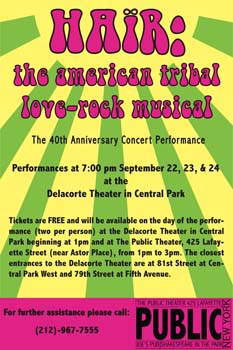







How and Why
In writing, as in life, there are certain expectations and conventions one is meant to fulfill. Exposition, Rising action, Climax, Falling action, Denouement: these are the necessary steps in writing prose. But to some writers, this does not always result in meaningful or even interesting works. Some mavericks beg the question “How and why?” One such maverick, namely Gertrude Stein, challenged the norms associated with short stories frequently, particularly in a 1922 tribute to a couple of her close bohemian friends “Miss Furr and Miss Skeene”. In favor of focusing on plot and setting, her manipulation of words in both an aesthetic and eloquent manner displays the characters over every other aspect in the story. Following in these footsteps, prolific Canadian author Margaret Atwood defied the standards of short stories in a more direct way with her composition entitled “Happy Endings”. In this piece Atwood satirizes the typical happy endings of traditional stories, ultimately pointing out that the only ending is death, and instead writes interesting “middles” in the story, all focusing on different (and occasionally the same) couples. In their respective, rebellious works, Stein and Atwood defy a typical, plot-driven story to focus on their characters’ interpersonal relationships.
Miss Furr and Miss Skeene are depicted as two women who form a bond over their interest in “cultivating their voices” and “being gay together”. They move in together, away from their families, to participate in their common interests. It’s interesting to note that the subtext of the story suggests an intimate relationship between the two women, a theory only substantiated by the intimate relationship of not only the real-life couple the characters were based on, but also of Gertrude Stein and Alice B. Toklas. This story, then, marks one of the first uses of the word “gay” as a synonym for homosexuality. On this vein of thought, the relationship between the two women is strengthened in the eyes of the reader, and their experiences, thusly, have more meaning than if they were just good friends.
Stein utilizes what critics call a “word portrait” to tell her story, where she transposes the ideas and techniques commonly associated with the fine arts and applies them to her writings. In exchange for a relatively simplistic plot in which the two women meet, spend time together, and break up, Stein carefully chooses specific words and phrases that she repeats again and again to emphasize the relationship between the characters: “They were quite gay there, Helen Furr and Georgine Skeene, they were regularly gay there where they were gay. They were very regularly gay.”
Atwood, too, sacrifices a linear plot for a character-driven story in “Happy Endings”. This story appears to share the same characteristics of repetitive and focused description and action of the protagonists as Stein’s work did; by dividing the text up into six different vignettes, Atwood allows herself to fill the work up with many different stories that all share a connective thread. She weaves the relationships of John and Mary, John and Madge, Mary and James, and Fred and Madge in an overlapping fashion that all end with death, for “…the endings are the same however you slice it”. Instead of building up to a climax, she tries the “how and why” of a plot by favoring “the stretch in between” since they “are just one thing after another, a what and a what and a what.”
Slyly, Atwood mocks the typical layout of a story, and perhaps even the typical subject of a story in “Happy Endings”. In recent years, this work has been described as “metafiction”, which is defined as “fiction in which the author self-consciously alludes to the artificiality or literariness of a work by parodying or departing from novelistic conventions (esp. naturalism) and traditional narrative techniques.” While that sums it up nicely, Atwood never intended to write a piece of metafiction; she intended to write a short story. It seems like a natural reaction from people to put labels and qualifiers on that which is unfamiliar, but it would appear that this was not the reaction Atwood intended, and in fact, was quite the opposite. Regardless of whatever epithet critics choose to give “Happy Endings”, it remains a tribute to the avant-garde in writing prose.
To challenge and renounce expectations and standards can result in interesting, thought-provoking works of prose, as illustrated by the stories “Miss Fur and Miss Skeene” and “Happy Endings”. But, before I write an ending (of which we have learned there is only really one), instead I close with the request to go back and read the middle of this essay; it should be more interesting.
*uncomfortably humid or airless. I didn't know it could mean that, but I needed an alliterative title.

The Best of Both Worlds
Before even the start of this essay, I am contemptuous of it. Not because I have a particular disdain for writing or expressing my thoughts on the whole—of course not—but for the sole reason that I am limited. I am limited intellectually because I am allotted only 500 words (which I never happened to feel was an adequate amount of space to convey even one idea). I am limited artistically due to the required professional and readable font and layout that is expected. And I am limited personally, because I have yet to cultivate a voice that would produce the perfect impression within the confines of this paper. But as I write this scalding criticism of an essay I have yet to start, I feel the need to ask myself: why in the world do I to feel this way? The answer, quite unfortunately, is because of the very education that has allowed me to do it.
So far in my academically dominated life, I have had ample experience in both the liberal and fine arts disciplines. I spent the first part of my higher education in an intensely academic preparatory school, where I earned my diploma after a rigorous (and slightly torturous) four years. On the heels of high school, I quickly enrolled in a fine arts college (applying the August before my senior year), where I spent two years freely wandering and expressing myself. While both experiences had their pros and cons, I could not help but feel imbalanced every step of the way. Very often, I was scornful of each school, believing they were not offering me proper instruction and that, somehow, neither of these situations actually fulfilled any of my needs. It was unfortunate, but the unequivocal truth of the matter.
In high school, logic ruled and strict boundaries were set; my opinions were often degraded and I had absolutely no connection to my peers. I was in this incredible mental state of restrained pandemonium at that school, the odd sensation of feeling rebellious and submissive at the same time. Combined with the bubbling hormones commonly associated with adolescence, it was an arduous time to say the least. But, I would not trade it in for another experience, because what I learned there I could not learn anywhere else. Though it pains me to say it, my basic skills of reasoning and logic were nurtured in a way that will never leave me, and I am a better person for it. Still, the scars inflicted will never heal, and I will always resent it.
Art school was the flip side of the coin. Free and bohemian, I have no objections saying that it was a much more enjoyable experience. I was inspired regularly, built relationships, and produced some of the best work I ever had. But, as a school, it was so disorganized and topsy-turvy I encountered too many frustrating problems: professors had no skill in the art of teaching, grades were late, paperwork had to be repeatedly filled out; it was a mess. Not to mention the overall subjective nature of art; how can someone possibly put a letter grade on that?
To achieve this proper balance, I have found it necessary to pursue a sort of mélange of an education, combining the two spheres of thought into a tightly packed five years. Aside from the ambitious thought of obtaining two degrees simultaneously, the notion of a BA/BFA program lends itself to the idea that for the first time in my life, I would have achieved this proper balance. It would hopefully seem, anyway. Do I want to spend another five years in school? Yes. And no. Regardless of the Hamlet-esque indecisiveness, I am secure in the fact that there is to be absolutely no other venue for me to learn and blossom in the manner that I personally need. I will always be indecisive about my future, (and my present, for that matter) and I will always want the whole plate if I were ever to feel satisfied.
Whether it’s self-righteous, pathetic, or brilliant, this is the path I have chosen to follow. Despite the cynical tone of this essay, I am charmed by the notion of studying two major disciplines concurrently, and I expect I will do better at the New School than any of the previous institutions. Certainly this is speculation, but given my past it seems only logical that the two halves I accomplished will eventually culminate in a whole.
I seem to have gone over the suggested limit by…three hundred and seventy-eight words. Sorry.